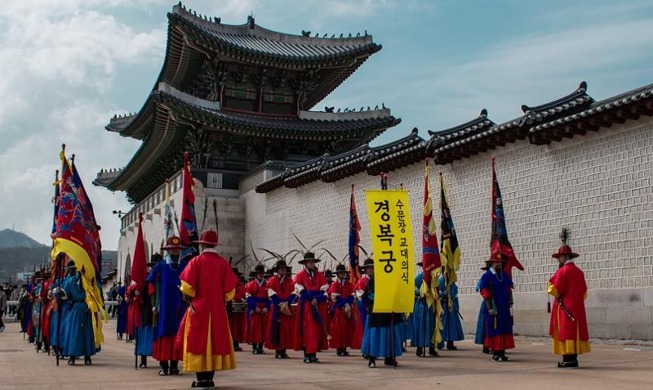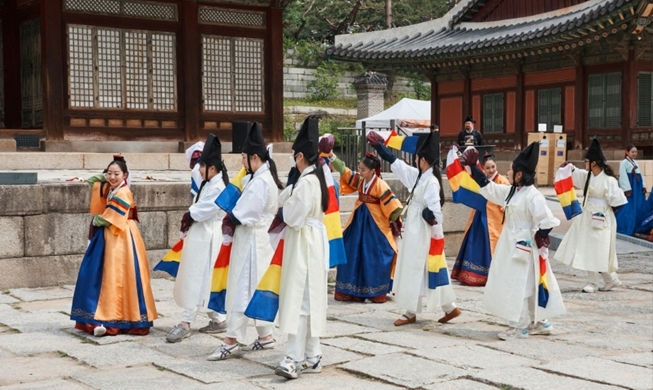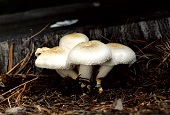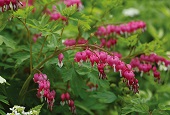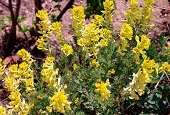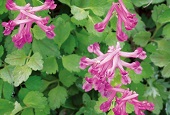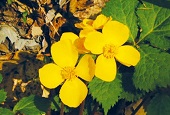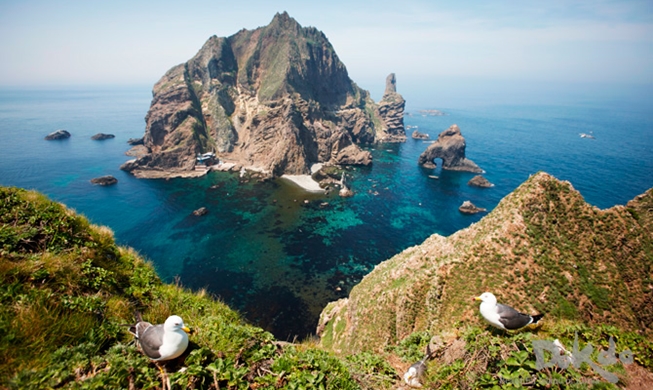-
 Korea.net's 24-hour YouTube channel
Korea.net's 24-hour YouTube channel- NEWS FOCUS
- ABOUT KOREA
- EVENTS
- RESOURCES
- GOVERNMENT
- ABOUT US
View this article in another language
- 한국어
- English
- 日本語
- 中文
- العربية
- Español
- Français
- Deutsch
- Pусский
- Tiếng Việt
- Indonesian
Flora & Fauna of Korea #48
Korea.net publishes a series of articles, “Nature You Meet in the Mountains,” about the peninsula’s mushrooms, insects, trees and herbs & flowers.
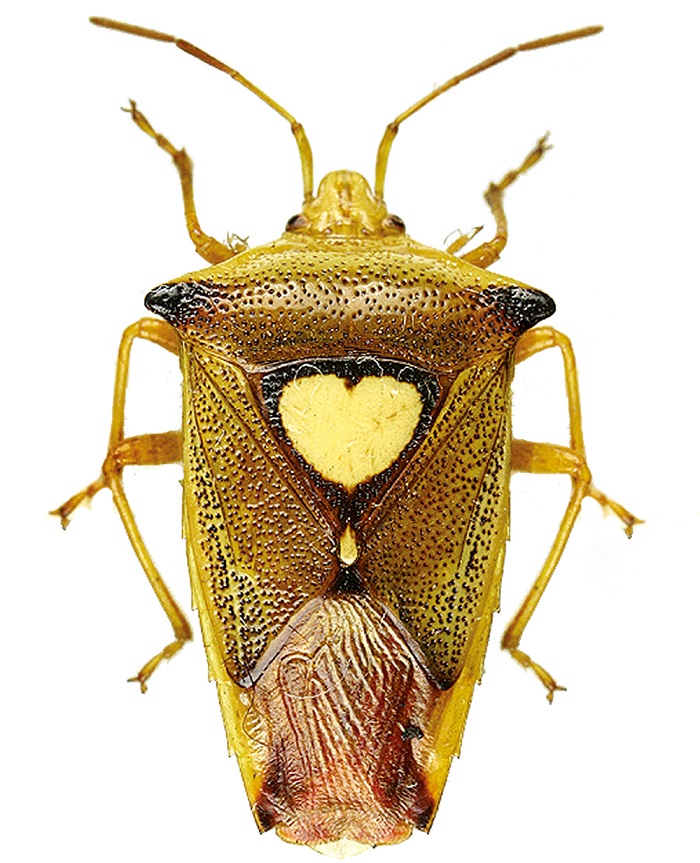
Insects
Name: 에사키뿔노린재 Esakibbul norinjae
Scientific name: Sastragala esakii Hasegawa
Distribution: Korea, China, Japan, Russia and Taiwan
This stinkbug is about 10 to 12.5 millimeters long. Males are relatively smaller than the females. The body is yellowish green with some randomly scattered green and reddish brown patterns. Black dots are found on the back. Both sides of the frontal thorax stand out in a triangular shape, the tip of which is colored black. The part that connects both sides of the tip is a little curvy. The area under the curve is reddish brown. The scutella has a heart-shaped pattern at the center, which is yellowish gray. It has lots of yellow patterns on a reddish brown base. The frontal wings are green and the rest is reddish brown.
Adults appear between May and September. The not-yet-fully-grown nymphs are found in groups around dogwood, water dogwood and Succedanea trees.
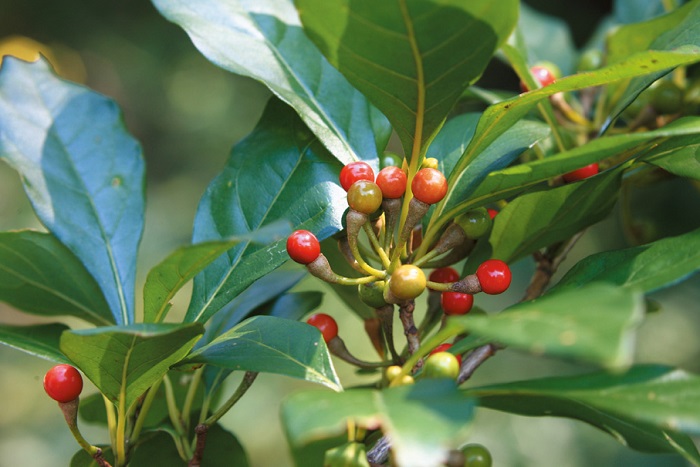
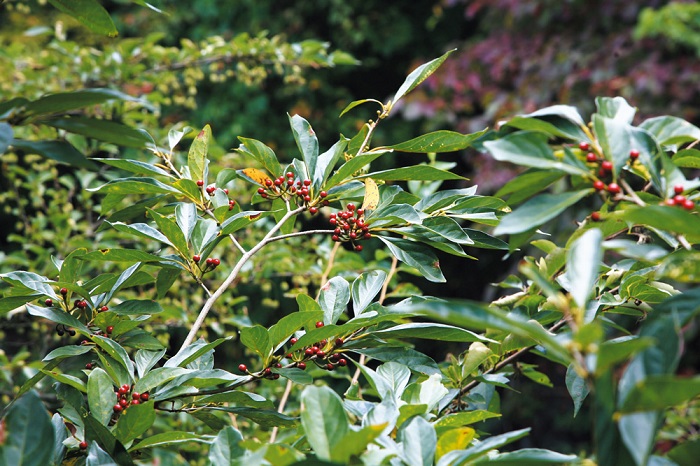
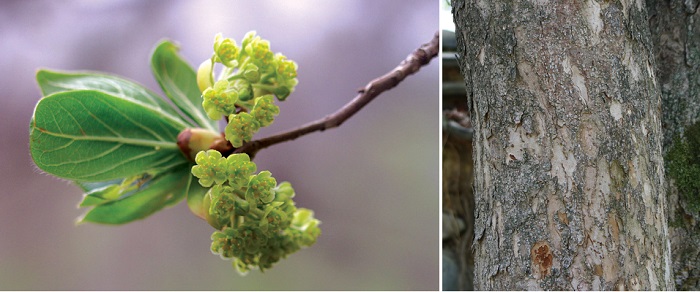
Trees
Name: 비목나무 Bimoknamu
Scientific name: Lindera erythrocarpa Makino
Type: deciduous broadleaf tall tree
Blooming season: April to May
Bearing season: August to October
Distribution: mountains in the northern parts of Hwanghe Province in North Korea
This tree grows to about 15 meters and can be 40 centimeters in diameter. The bark is whitish yellow. With age, the bark can break into pieces. The leaves are alternating, thick, oval and are acute or rounded. The surface is glossy. The underside is grayish green. This dioecious tree gives bloom to yellow umbel at the leaf axil. It bears berries that are round and red.
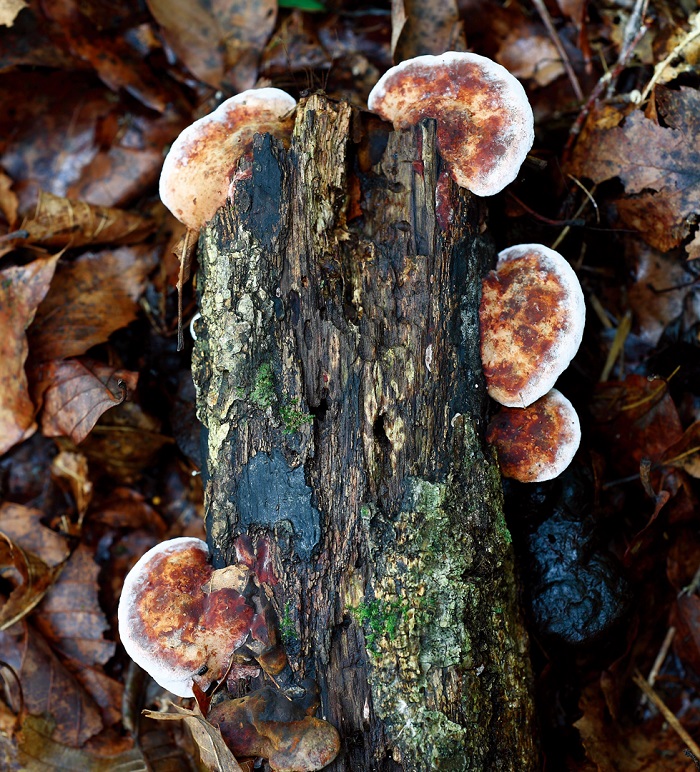
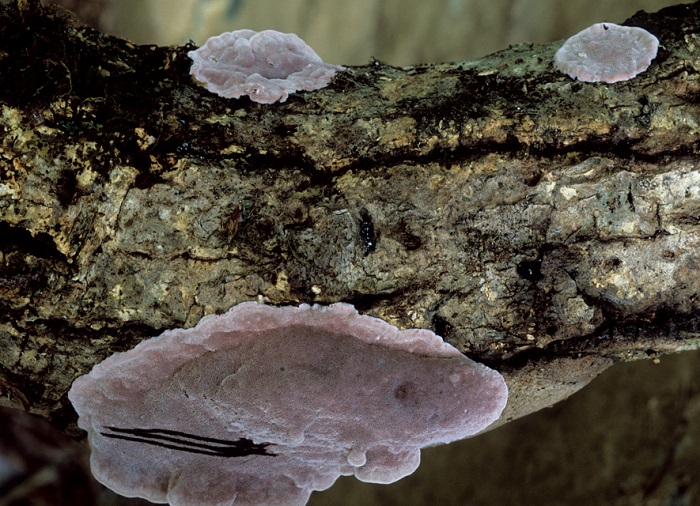
Mushrooms
Name: 장미잔나비버섯 Rose Butterfly Mushroom
Scientific name: Fomitopsis rosea (Alb. Schwein.) P. Karst.
Type: saprophile spore
Print: white
Inedible
This mushroom grows from stumps of fallen and dead broadleaf trees. It causes a brown rot. The cap is about 2 to 10 centimeters wide, 1 to 3 centimeters thick and can be seen in various shapes and sizes. The surface is grayish brown to reddish purple, while the edge is light pink. The pores consist of multiple layers, each 1 to 3 millimeters thick. The holes are round or oval and are dark purple in color.
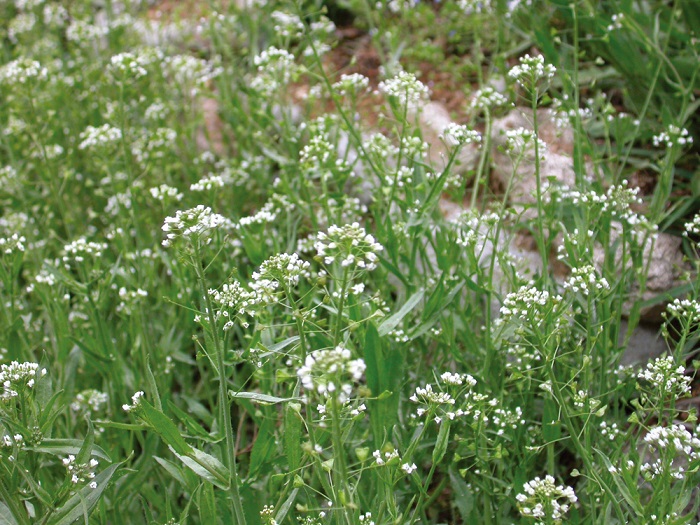
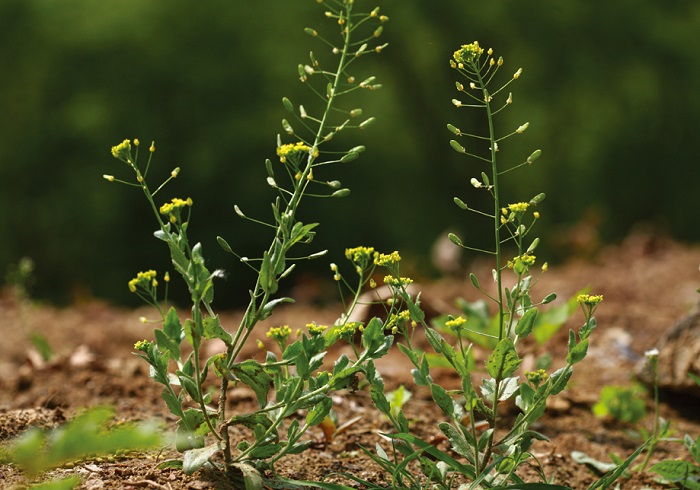
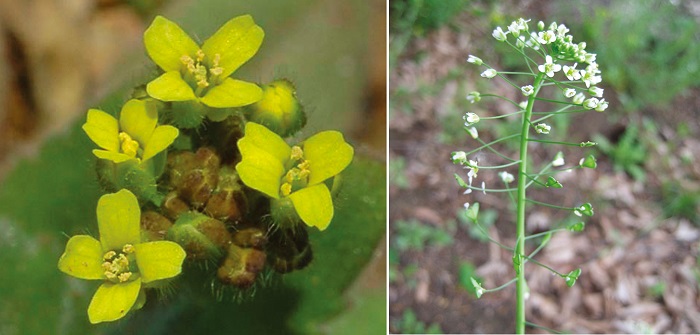
Herbs & Flowers
Name: 냉이, 나생이, Naengi
Scientific name: Capsella bursa-pastoris (L.) L.W. Medicus
Blooming season: May to June
Bearing season: September to October
Distribution: mountains nationwide
This herb lives for two years in fields and mountains. It grows to about 10 to 50 centimeters and has no fur or small hairs. Radical leaves grow in clusters and spread out in every direction. The radical leaves grow normally to about 10 centimeters. The cauline leaves are alternating and get smaller as the plant grows upward and the petiole slowly disappears. It gives bloom to white flowers from the pedicel. It bears an egg-shaped fruit.
*This series of article about Korea’s insects, trees, mushrooms and herbs & flowers has been made possible through the cooperation of the Korea National Arboretum.
Korea.net publishes a series of articles, “Nature You Meet in the Mountains,” about the peninsula’s mushrooms, insects, trees and herbs & flowers.

Insects
Name: 에사키뿔노린재 Esakibbul norinjae
Scientific name: Sastragala esakii Hasegawa
Distribution: Korea, China, Japan, Russia and Taiwan
This stinkbug is about 10 to 12.5 millimeters long. Males are relatively smaller than the females. The body is yellowish green with some randomly scattered green and reddish brown patterns. Black dots are found on the back. Both sides of the frontal thorax stand out in a triangular shape, the tip of which is colored black. The part that connects both sides of the tip is a little curvy. The area under the curve is reddish brown. The scutella has a heart-shaped pattern at the center, which is yellowish gray. It has lots of yellow patterns on a reddish brown base. The frontal wings are green and the rest is reddish brown.
Adults appear between May and September. The not-yet-fully-grown nymphs are found in groups around dogwood, water dogwood and Succedanea trees.



Trees
Name: 비목나무 Bimoknamu
Scientific name: Lindera erythrocarpa Makino
Type: deciduous broadleaf tall tree
Blooming season: April to May
Bearing season: August to October
Distribution: mountains in the northern parts of Hwanghe Province in North Korea
This tree grows to about 15 meters and can be 40 centimeters in diameter. The bark is whitish yellow. With age, the bark can break into pieces. The leaves are alternating, thick, oval and are acute or rounded. The surface is glossy. The underside is grayish green. This dioecious tree gives bloom to yellow umbel at the leaf axil. It bears berries that are round and red.


Mushrooms
Name: 장미잔나비버섯 Rose Butterfly Mushroom
Scientific name: Fomitopsis rosea (Alb. Schwein.) P. Karst.
Type: saprophile spore
Print: white
Inedible
This mushroom grows from stumps of fallen and dead broadleaf trees. It causes a brown rot. The cap is about 2 to 10 centimeters wide, 1 to 3 centimeters thick and can be seen in various shapes and sizes. The surface is grayish brown to reddish purple, while the edge is light pink. The pores consist of multiple layers, each 1 to 3 millimeters thick. The holes are round or oval and are dark purple in color.



Herbs & Flowers
Name: 냉이, 나생이, Naengi
Scientific name: Capsella bursa-pastoris (L.) L.W. Medicus
Blooming season: May to June
Bearing season: September to October
Distribution: mountains nationwide
This herb lives for two years in fields and mountains. It grows to about 10 to 50 centimeters and has no fur or small hairs. Radical leaves grow in clusters and spread out in every direction. The radical leaves grow normally to about 10 centimeters. The cauline leaves are alternating and get smaller as the plant grows upward and the petiole slowly disappears. It gives bloom to white flowers from the pedicel. It bears an egg-shaped fruit.
*This series of article about Korea’s insects, trees, mushrooms and herbs & flowers has been made possible through the cooperation of the Korea National Arboretum.




